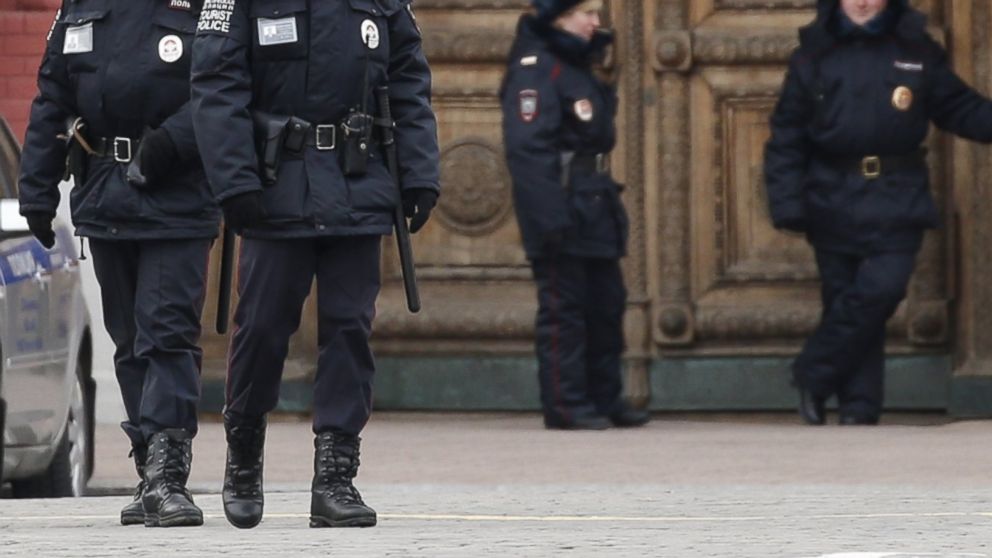Russia Detains Dozens of Suspected Members of Japanese Doomsday Cult
Russian police detained over 40 alleged members of the Aum Shinrikyo sect.

MOSCOW— -- Russia police have conducted major raids across Moscow and St. Petersburg targeted against alleged followers of the Japanese doomsday cult, Aum Shinrikyo, known for carrying out deadly sarin attacks in Tokyo in the mid-1990s.
Police have detained 44 people across the two cities, searching more than 20 addresses connected with the group, a Russian Interior ministry statement said. Video of the raids broadcast on state Russian TV showed Russian SWAT teams searching apartments, with the alleged sect-members lying on the ground.
Russia’s Investigative Committee, the equivalent of the FBI, said those detained were suspected of setting up a branch of the group, which is banned in Russia as a violent organization. The group’s organizers’ main goal was to coerce its followers into handing over their property, using "physical and psychological pressure," investigators said.
The raids follow the mass deportation last week of almost 60 suspected Aum Shinrikyo followers from the tiny Balkan country, Montenegro, where they had reportedly been holding a conference. At least 43 of them were Russian, Montenegro’s Interior ministry said then.
It was unclear whether today’s arrests were linked to the deportations, though a video apparently from the raids and broadcast on the pro-Kremlin channel NTV, which has close links to the security services, seemed to show at least one of the detained acknowledging he had traveled to Montenegro.
Aum Shinrikyo, which is banned in the United States, became known globally after it carried out a terrorist attack using the nerve-agent sarin on the Tokyo subway in 1995, hoping to provoke the end of the world. The attack killed 12 people and poisoned thousands of others.
The sect worship their leader, a man known as Shoko Asahara, whose real name is Chizuo Matsumoto, now on death row in Japan for his role in ordering the Tokyo attacks. The group’s ideology mixes elements of Buddhism and Hinduism, with an obsessive focus on the apocalypse.
Aum Shinrikyo became hugely popular in Russia in the 1990s following the collapse of the Soviet Union, a period when apocalyptic cults briefly thrived -- by some estimates the group at one point had 30,000 followers in Russia, with a prime-time Moscow TV show and holding mass rallies.
The group’s leadership once focused on Russia as the key to unleashing an apocalyptic nuclear war, which they believed would bring them to power. During the early 1990s, Aum Shinrikyo leaders made considerable efforts to acquire a Russian nuclear weapon, and sought to recruit senior Russian officials and scientists, including the head of the country’s security council, whom they persuaded to help them open a Moscow headquarters. But after the 1995 attacks, Russia’s government moved swiftly to outlaw the group and shut down its cells.
It was unclear how close the group detained today is to the original Japanese cult, which has rebranded as “Aleph.” The U.S. State Department in 2012 estimated that there were roughly 1,500 Aum Shinrikyo members in Japan, and around 300 in Russia.
Today, police said they had seized literature and other ritual items related to the cult. The group deported from Montenegro had been holding their conference around the time of the anniversary of the March 20, 1995, Tokyo attack.




